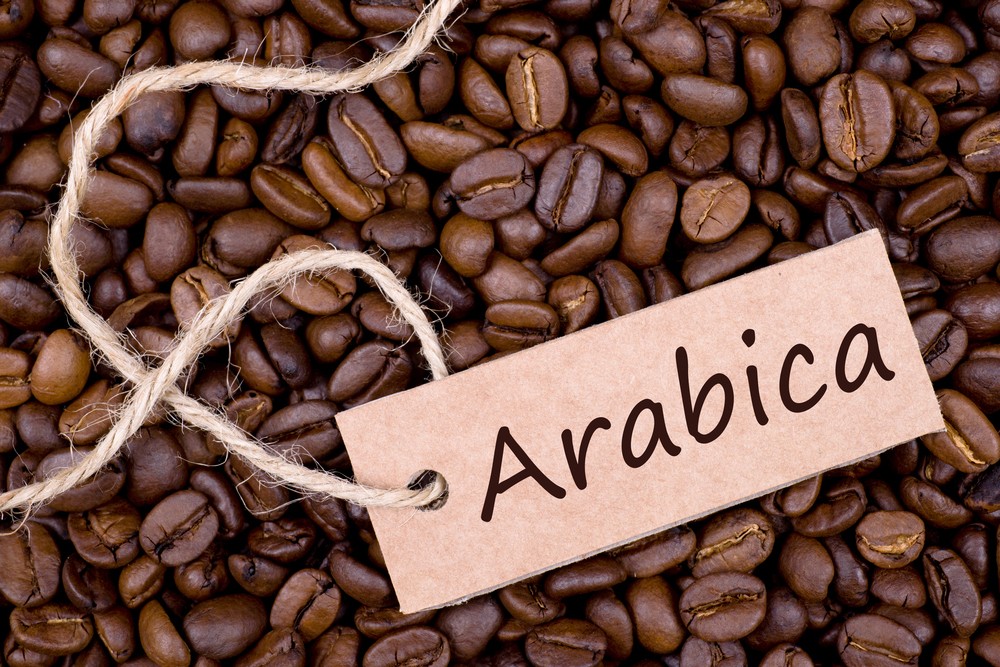Arabica or Robusta?
Arabica
Arabica (the Arabian coffee tree) comes from Ethiopia. This is the most widespread variety, cultivated in all tropical countries. Its botanical name is the Arabian coffee tree (Coffea Arabika). This capricious plant mostly grows on mountainous plateaus and slopes, where days are hot and nights are cold,
but it can’t stand frost.
After every rainfall season, coffee trees break into flower, and after nine months, the coffee-berries are ready to be harvested. One Arabica tree yields only 5 kg of raw material which is then processed to get about 1 kg of coffee beans ready for brewing.
Main characteristics:
• large elongated beans;
• tender and delicate aroma with slightly sour taste;
• low caffeine content (no more than 1.5%);
• contains 18% of aromatic oils.
Arabica requires constant care and better growing conditions which makes it more expensive than Robusta. It has a mild taste with a bright aroma. It’s different kinds of Arabica that bring the variety of taste which we love so much in this drink.

Robusta
The botanical name for Robusta is Canephora Robusta coffee tree (Coffea Canephora). This kind of coffee is believed to have originated from Africa; it was first discovered in the Congo river basin.
Unlike Arabica, Robusta is considered a more unpretentious plant. It is very disease-resistant, yielding and it can grow in such conditions where Arabica will never survive. It is mostly cultivated in Central Africa, Asia and Brazil. This kind of coffee contains more caffeine than Arabica which makes it stronger. Robusta is not as aromatic and delicate as Arabica, so it is used for mixtures more often.
Main characteristics:
• small rounded beans;
• high caffeine content (about 3% of the total weight)
• taste distinguished by harsh, earthen-like flavors;
• a strong and rich aroma.
Liberica and Excelsa
There are two other kinds of coffee trees, Liberica and Excelsa, that yield beans suitable for drink purposes. However, their quality is rather low. Liberica coffee, or
Coffea Liberica (Liberian coffee tree) comes from Western Africa. Today, it is grown in almost every country of Africa, as well as in the Philippines, Sri Lanka and Indonesia. This plant is very disease-resistant, but due to their unimpressive taste, Liberica beans are used for coffee mixtures primarily.
Excelsa (Coffea Dewevrei) is a little-known type of coffee tree. It is very tall – up to 20 meters, but has almost no economic value.
Kinds of coffee
In their turn, kinds of coffee are divided into mono-varieties or mono-types – the coffee grown in a specific region, or even at a specific plantation. Names of such monotypes are developed from the names of regions; mono-varieties feature unique taste and aroma peculiarities. For example, Kenya is home to coffee with berry flavors, sweet taste and a caramel shadow. Meanwhile, coffee from Costa Rica features bread and nut shadows in its aroma, while its taste flows from bright citrus and nut to a tender caramel flavor.
Some kinds are made by mixing different varieties or kinds of coffee. Maintaining certain proportions result in softer taste, necessary roughness or pleasant sourness. Through mixing different kinds of coffee, one can get a sweetish brew, with a small caffeine content or with a strong bitter taste, with a bright aroma or powerful tonic effect.



